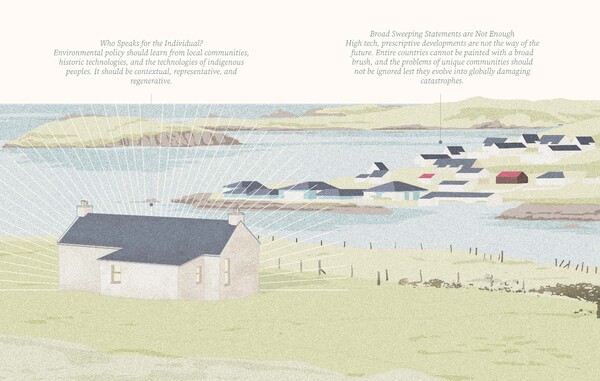My final project at the MSA explores a topic of great interest to me: the ways in which modern ‘greenwashed’ infrastructural developments can become less ecologically and culturally damaging. My research was focused on the Shetland Archipelago, where many damaging ‘green’ developments are proposed, such as the Viking Wind Farm. This 103 turbine wind farm will irreparably destroy 238 hectares of globally important blanket bog habitats and harm much of Shetland’s ecology during its construction and operation. Are these the sacrifices necessary to reach net zero, or is there a better way? This research culminated in a new ‘Manifesto for Environmental Design in Shetland’, learning from the mistakes of modern green infrastructure, and emphasising the importance of nature, small scale interventions alongside larger developments, and low-tech solutions to environmental problems. These problems cannot be solved exclusively with new technology when technology is what caused them in the first place. Can historic low-tech ‘technologies’ be reinterpreted to solve them?
To make this new manifesto tangible, I used its ideas as inspiration to design a new infrastructural system for Shetland. The new system revolves around environmentally regenerative combined agroforestry and fish farming systems- merging the farming systems of ancient Shetland with aquacultural forms from the indigenous Aymara people of the Andes. Whilst these new farming systems increase the quality of food available to Shetlanders and enrich their soils- ancillary buildings built within derelict croft houses house small scale supportive industries, such as a food waste composting and biogas production facility, or a glass recycling plant using bags of waste glass to dam and restore peatland. All the infrastructural components of the new system are designed to work symbiotically to provide for the communities in which they sit, and to regenerate and restore the sensitive ecology that surrounds them.


